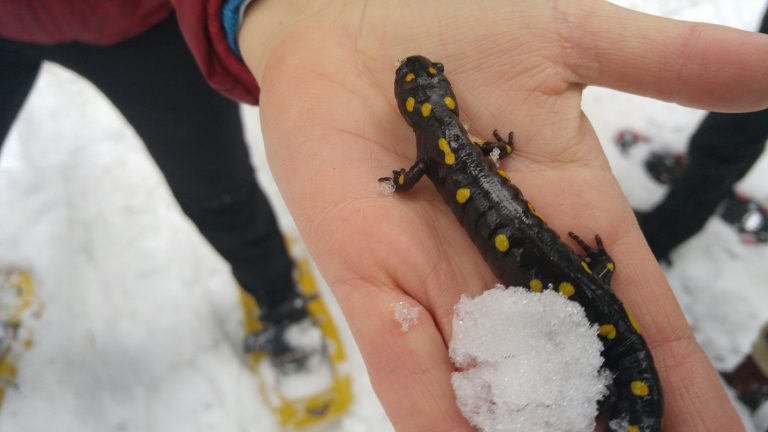In the throes of yet another mild winter, our peanut feeder hosts a procession of hungry birds. Chickadees, nuthatches, and woodpeckers are the mainstay of our avian clients.
But for the first time, we are also seeing daily visits by two southerners – a Carolina Wren and a handsome Red-bellied Woodpecker.
A decade ago, we would visit Niagara-on-the-Lake for a glimpse of these species, and marvel that their ranges just barely reached into the southernmost bits of Ontario. Now, they are a vanguard of species reaching northwards as climate change takes hold in earnest.
“Like all wild species, birds are finely attuned to their environment.”
Like all wild species, birds are finely attuned to their environment. For these two species, deep snow doesn’t seem to pose much of a challenge. What limits their northwards spread is more likely to be the deep-freeze overnight temperatures, and for the past several winters those have been scarce.
So northwards they push; Red-bellied Woodpeckers have suddenly become a widespread member of our local bird community, and Carolina Wrens are not far behind.
This range shift affects other species as well. Gray Jays, the nominee as Canada’s national bird, seem to have disappeared from this area. Long-term studies in Algonquin Park suggest that this species’ food-storing strategy may be the cause. Gray Jays collect high-fat food items in the fall, wedging these nutritious meals into bark crevices and other hiding places to sustain them through the winter. But milder winters allow those food stores to go rancid, pushing Gray Jays northwards into colder climes.
A remarkable short video produced by The Nature Conservancy looks ahead at how the changing climate will affect the distribution of birds, mammals, and amphibians across North America. A blizzard of coloured arrows shows the expected routes that individual species can be expected to take on their shift northwards. For migratory birds, that shift is relatively easy, and even most larger mammals can adjust their range fairly quickly. But for salamanders and other amphibians, migrating constantly to keep up with the pace of climate change is likely to be an impossible challenge.
Zoom in to a more detailed level of the video, and the critical role of Simcoe County in this deadly race against time becomes clear. For most species, including plants, the Great Lakes act as an enormous barrier. Species are forced to cross at narrow spots, such as the Detroit River or the Niagara River, and many of these are then concentrated in a narrow band between Georgian Bay and Lake Simcoe as they move further north. Protecting the natural areas that provide corridors of continuity for this great shift is emerging as an urgent priority for the Couchiching Conservancy and our allies.
“Zoom in to a more detailed level of the video, and the critical role of Simcoe County in this deadly race against time becomes clear.”
Don’t expect to see a great wall of migrating wildlife surging up from Bradford and Barrie – that’s not how this kind of ecological change plays out. But we can expect to see more and more Carolina Wrens and Red-bellied Woodpeckers, and a multitude of less visible species, gradually showing up as part of the wildlife mosaic of our area. This is a process that is measured in decades and centuries, and one with uncertain success for many species.
The great question for the future of biodiversity is how many species will be able to adapt to the changing climate by shifting their range. Our responsibility is to help that process by keeping, and linking, the habitats they will need.
Ron Reid is the Carden Coordinator for The Couchiching Conservancy, a non-profit land trust dedicated to protecting nature for future generations..

